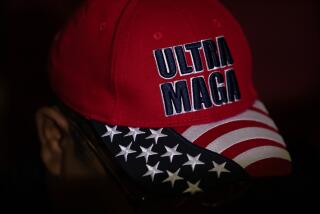The GOP’s a Toyota, Dems Are All GM
- Share via
In American politics today, who is General Motors and who is Toyota?
You might imagine that the GOP would be the GM Party. Conservatives are more likely to drive gas-guzzling Chevy Suburbans; liberals are more likely to try a sensible RAV4. A Hummer almost screams “I’m a Republican and I don’t care”; the Toyota Prius comes standard with a faded Kerry-Edwards bumper sticker.
But if you look at the state of the parties rather than the driving habits of their members, the picture reverses. The glory years of GM coincided with those of the Democrats. From 1940 to 1968, it dominated the automobile market just as the Democrats ruled politics. GM cars were so ubiquitous that a GM executive could say that what is good for GM is good for America. Democrats had a lock on Congress and controlled the White House, except for the eight years when the Republicans put up that decidedly liberal Oldsmobile, Dwight Eisenhower.
By the same token, the decline of General Motors coincided with the decline of the Democrats. GM was pummeled by competition from more innovative carmakers -- particularly Japanese firms such as Toyota -- in the 1970s and ‘80s. It enjoyed a brief revival in the ‘90s when it improved its manufacturing techniques and sharpened its image. But as it approaches its 2008 centennial, sales are sputtering, and two of the three major credit agencies have reduced its bonds to junk status.
This is more than just a coincidence. GM and the Democrats were rooted in the world of big capital and big labor, of long-term planning and predictable product cycles. The automaker could afford to guarantee its workers decent pay and benefits so long as there was limited competition. And the Democrats could take their political dominance for granted.
The same forces that are tearing apart GM are also discombobulating the Democrats. The increase in foreign competition from the ‘80s onward has made it impossible for companies to guarantee good jobs for life: GM is crippled by the huge cost of its healthcare benefits. Foreign competition has also put a premium on flexibility and innovation -- skills that neither GM nor the Democratic Party have cultivated.
The rise of the “new model” Republican Party almost perfectly parallels the rise of Toyota. The GOP roared to prominence in the 1980s, suffered a slight setback as the Democrats retooled in the ‘90s, and now dominates the presidency and Congress. The Republicans have thrived for the same reason as Toyota -- they have been better at producing new products and going after new customers.
GM’s strategy is still devoted to hanging on to the base: churning out Cadillacs for the posh and Buicks for the upwardly mobile. Toyota, once known for small, cheap cars, now makes pickup trucks and Lexuses. And it is focusing on the Prius while GM is still betting on monster trucks.
The Republicans have also been “growing their market.” In the ‘70s and ‘80s, they converted white males. In the last election they made further inroads into the Democrats’ market: women, Latinos and blacks. The bump among blacks was small, but Republican National Committee Chairman Ken Mehlman makes a point of visiting a black church or college once a week.
Meanwhile, his opposite number, Howard Dean, contents himself, GM-like, with preaching to the converted. The Democrats could still get lucky. The political news on everything from Social Security to Iraq is hardly helping the Republicans. But when it comes to long-term trends, the GOP is the Toyota party.






